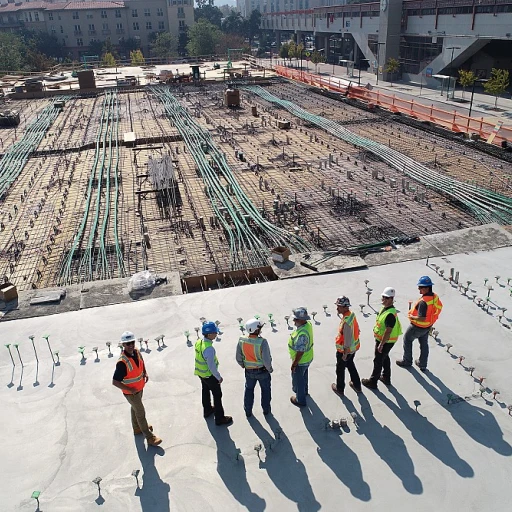
The Basics of Intermittent FMLA
How Intermittent Leave Works
Intermittent leave under the Family and Medical Leave Act (FMLA) can be a bit more complex than regular FMLA leave. Instead of taking one continuous block of time off, employees may qualify to take leave in separate blocks of time due to a single qualifying reason. This type of leave is particularly beneficial for employees needing flexibility to manage a serious health condition, care for a sick family member, or attend medical treatments. Employers and employees alike must understand how this system operates. Essentially, an employee can use intermittent FMLA for various health-related conditions or qualifying reasons such as caring for a child or another family member with a serious health issue. The time taken isn't limited to full days but can be divided into hours or even minutes, depending on the necessity and agreement between the employer and the employee. To be eligible, the employee must maintain proper documentation, including medical certification from a health care provider. This aids in verifying the need for leave and ensures the employee's situation aligns with legal requirements. Daily tasks like updating work schedules and recording hours worked become critical, as these help balance the employee's entitlement against the operational needs of the business. For greater insights on managing time-off requests, visit our detailed discussion on navigating time-off requests in the future workplace.Frequency and Duration: Key Considerations
Understanding Frequency and Duration in Intermittent FMLA
Navigating the intricacies of the Family and Medical Leave Act (FMLA) often involves grappling with its intermittent provisions. When an employee is dealing with a serious health condition or providing care for a family member, intermittent leave allows them to take leave in separate blocks of time rather than in one continuous period.Frequency and Duration Explained
Intermittent FMLA brings flexibility to both employees and employers, but deciphering the frequency and duration of this leave can be challenging. Employees may need leave in manageable chunks based on medical treatment or care schedules, often leaving employers in a balancing act to manage future workforce adaptability.
- Leave Frequency: This refers to how often an employee needs to take time off. For example, a health condition requiring weekly treatment can mean an employee taking a few hours off every week.
- Duration of Leave: This indicates the length of time each leave instance lasts. Whether it's a full day or just a couple of hours per week, each period must be justified and approved as a qualifying reason under FMLA.
Understanding these aspects can help both sides. Employers need to know whether the leave counts as a qualifying reason under FMLA and what conditions necessitate it. Medical certification often serves as documentation for these cases. Meanwhile, employees have to adhere to their work schedule and ensure they meet the hours worked for eligibility.
Effectively managing such leaves necessitates a patient-centric approach rooted in precise medical care and treatment to meet both health and work requirements. As workplaces evolve, the dynamics of intermittent FMLA will remain pivotal in realizing the balance between duty and well-being.
Impact on Workforce Management
The Challenges of Workforce Management with Intermittent FMLA
Managing workforce functionality becomes notably more complex when intermittent FMLA leave is a factor. The unpredictability of when and how frequently an employee may need to take leave can disrupt typical work schedules and demand careful planning. Employers must navigate these waters delicately to maintain operational efficiency while respecting employees' rights and individual circumstances.
Key considerations for management involve assessing the accumulated hours worked for each employee and ensuring that everyone is fulfilling their role while covering for those taking intermittent leave. Challenges arise especially when employees need to care for a family member or child or manage a health condition themselves that necessitates leave under FMLA.
To effectively mitigate disruptions, organizations may need to consider deploying creative solutions such as:
- Implementing a flexible work schedule that accommodates unexpected absences.
- Cross-training employees to ensure that multiple team members can cover critical tasks.
- Utilizing part-time or temporary staff to fill gaps when employees take leave.
- Enhancing communication channels to keep all employees informed about potential absences and coverage plans.
The combination of strategic staffing and supportive health care policies helps manage these dynamics. By focusing on adaptability, institutions can maintain productivity levels without compromising the well-being of their workforce.
It's essential for employers to recognize that the complexity of managing intermittent FMLA also extends to legal compliance and record-keeping, thus requiring well-established policies and clear guidelines.
Organizations can find more insights into enhancing workforce adaptability in our comprehensive guide to improvement plans.
Legal and Compliance Challenges
Legal Obligations and Challenges for Compliance
The intricacies surrounding the management of intermittent FMLA present several legal and compliance challenges, particularly due to its complex nature. Employers must navigate the regulations set forth by the Family and Medical Leave Act (FMLA) to ensure compliance when employees take leave for qualifying reasons. This becomes even more challenging as it involves ensuring that both the needs of the business and the legal entitlements of the employee align effectively. To stay compliant, employers must understand the qualifying conditions under FMLA, including serious health conditions, medical certification, and situations involving the care of a child or family member. Key to this process is the maintenance of accurate records of hours worked and intermittent leave taken, ensuring that each period of leave is appropriately counted under FMLA provisions. Another layer of complexity arises regarding employee FMLA leave when it involves scenarios such as military caregiver leave or when an employee needs leave to provide care to a family member suffering from a serious health condition. Managing these situations requires a clear understanding of the legal requirements surrounding care leave along with any medical treatment plans involved.Meeting Employer Responsibilities
Employers need to adopt proactive strategies to manage the compliance issues associated with intermittent FMLA. This includes actively monitoring leave usage across employee groups and reviewing work schedules to accommodate intermittent leave without disrupting operations. Periodic audits of leave records and encouraging transparent communication between the employer, employee, and health care provider can mitigate potential legal risks. Moreover, the medical certification requirement is crucial. Employers must verify employees' entitlement to FMLA through proper documentation, ensuring that each health condition is appropriately certified by a health professional. This also involves managing expectations for hours that employees will be unavailable due to intermittent leave and preparing adequately. By fostering an environment that supports employee entitlements while maintaining rigorous compliance, organizations can better balance their legal obligations with operational effectiveness. Addressing these challenges head-on and incorporating a systematic approach can ensure both employer and employee satisfaction while minimizing legal risks associated with non-compliance.Technological Solutions for Managing Intermittent FMLA
Technological Innovations in FMLA Management
As organizations grapple with the complexities of managing intermittent FMLA leave, technology has emerged as a vital resource in streamlining processes and ensuring compliance. Employers are increasingly leveraging digital tools to effectively track, manage, and report on employee FMLA leaves, minimizing administrative burdens.
Workforce management systems now often include modules specifically designed for FMLA tracking. These systems enable employers to record leave hours, manage entitlements, and handle medical certifications with precision. This technological integration ensures employers maintain accurate records while simplifying the administrative workload associated with managing leave requests.
Moreover, software solutions equipped with AI capabilities can predict patterns related to FMLA leaves, aiding employers in planning work schedules without disrupting productivity. By analyzing data from previous months, these systems can anticipate periods of high leave frequency, thereby facilitating better workforce management strategies.
Cloud-based solutions are also being employed to enhance data accessibility and security. These solutions allow for real-time updates on leave taken by employees, enabling HR departments to maintain up-to-date records and preventing potential legal and compliance challenges.
For both employees and employers, mobile applications offer a convenient way to request and track FMLA leave. Employees can easily log hours worked, submit necessary certifications, and access health care details pertinent to their leave, all while maintaining communication with their employers. This enhanced communication fosters a better understanding between employees, who may be dealing with serious health conditions, and their employers, who need to account for work schedule adjustments.












